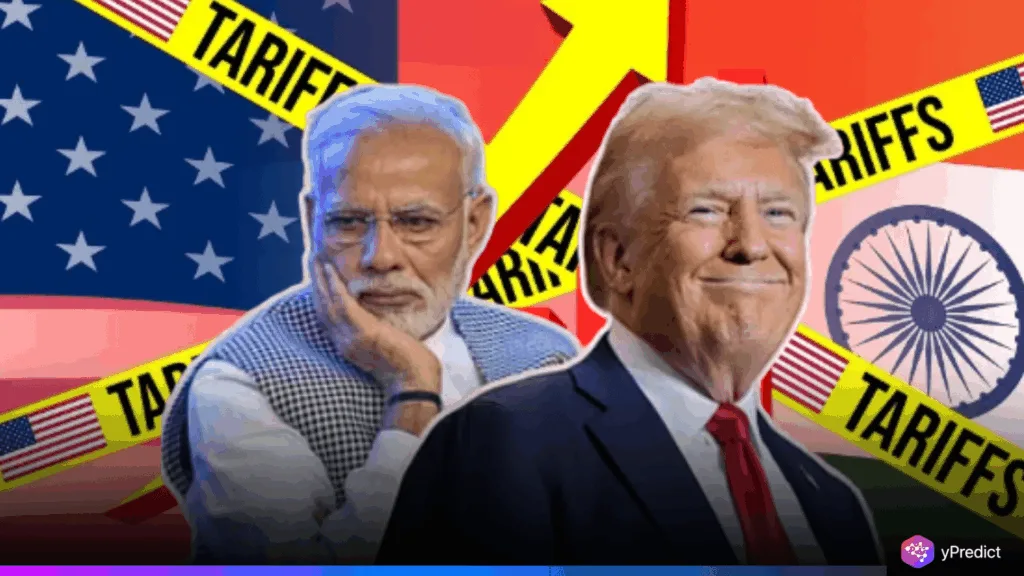
Starting on August 27, the US will raise its duty on Indian imports by 25%, increasing the overall tariff to 50%. Executive Order 14329 implemented the measure with the intention of applying pressure to India regarding its energy relations with Russia. Investors are therefore uneasy about this decision, as currency markets are volatile due to the US-India tariffs announcement. Additionally, as global markets show growing uncertainty, forex traders and global funds are preparing for volatility.
US-India Tariffs Trigger Shockwaves Across Forex Markets
The rupee rapidly dropped against the dollar as markets opened, signaling a potential strain. Analysts describe this as a new source of volatility for emerging markets. Furthermore, exporters are in a rush to ship their goods before the increased taxes take effect. Thus, this is especially so for sectors like gems, textiles, and seafood.
Additionally, investor sentiment has changed. Asia’s risk assets declined, but demand for safe-haven assets drove up gold and the dollar. Therefore, as traders evaluate the knock-on effects on capital movements and trade flows, the global markets are now more volatile.
Forex traders face intense pressure. A weaker rupee, probable central bank intervention signals, and increased hedging expenses are some of the forex effects. Additionally, regional currencies that are linked to India might be affected.
Can India Navigate the Storm of Higher Tariffs?
New Delhi has promised relief for impacted exporters and denounced the action as unwarranted. There is consideration of alternative trade routes and policy support for small businesses. Thus, there are still diplomatic attempts to obtain exemptions or reduce tariffs. However, a speedy resolution is not anticipated. If export losses increase, the global markets might remain volatile.
Deeper shocks might have an impact on sectors that heavily depend on U.S. demand, such as seafood and jewelry. However, the effect on forex is probably going to continue as traders anticipate increased volatility in emerging-market currencies. Global trade policy may also be impacted by the US-India tariffs.
US-India Tariffs Leave Lasting Impact On Global Trade
Investor confidence and the forex markets are facing new challenges as a result of the sharp increase in US-India tariffs. Exporters are under pressure to alter their strategies, and global supply networks are considering alternative options.
Additionally, because policy uncertainty causes market dynamics to change quickly, currency traders are constantly on high alert. As a result, high volatility is anticipated to persist in the near future.







